Lubricants

Commercial Lubes
Our products take care of both your diesel engine and petrol engine requirements. Our diesel range of premium products includes diesel engine oils, coolants and greases, while our petrol range for your automotive engine requirements has a range of
specifications to meet your needs.
We have depots situated in Durban, Harrismith, Ladysmith, Newcastle and Greytown.
45 Chris Hani Rd
Fuels┃Lubes┃LPG┃Taxi Spares
Tel (+27) 31 570 0500
sales@kznoils.co.za
45 Chris Hani Road, Durban
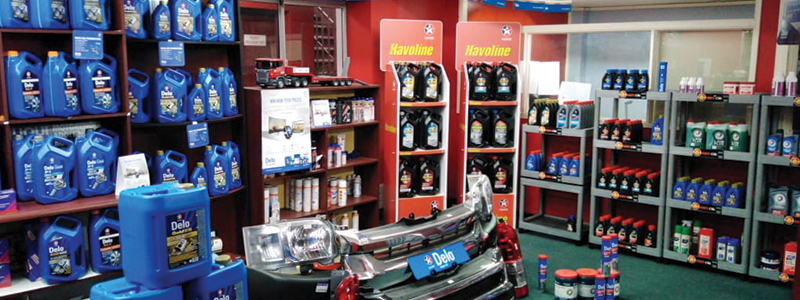
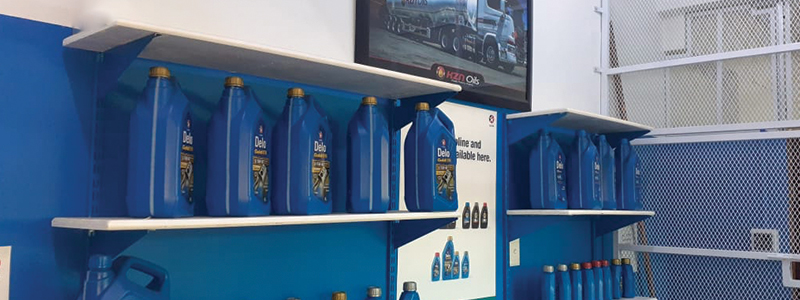
Williams Rd Depot
Fuels┃Lubes┃LPG┃Taxi Spares
Tel (+27) 31 306 1340
wrd@kznoils.co.za
51 Khuzimpi Shezi Rd, Congela
Harrismith Depot
Fuels┃Lubes┃LPG┃Taxi Spares
Tel (+27) 72 674 7275
harrismith@kznoils.co.za
81 Mckechnie St, Harrismith

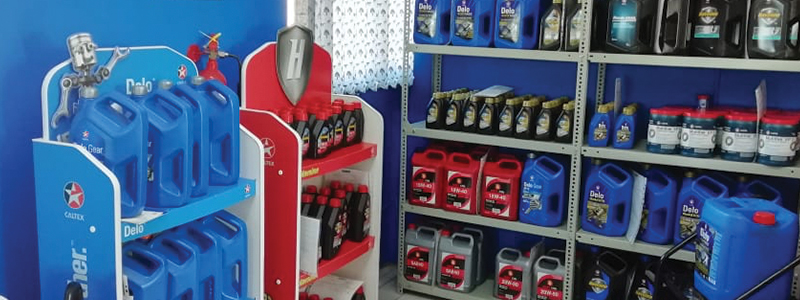
Ladysmith Depot
Fuels┃Lubes┃LPG┃Taxi Spares
Tel (+27) 36 631 0481
ladysmith@kznoils.co.za
41 Diamana Road, Ladysmith
Newcastle Depot
Fuels┃Lubes┃LPG┃Taxi Spares
Tel (+27) 34 312 1625
newcastle@kznoils.co.za
22 Van Der Bijl St, Newcastle
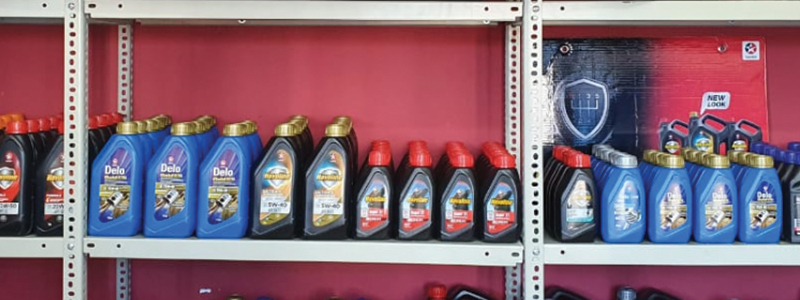
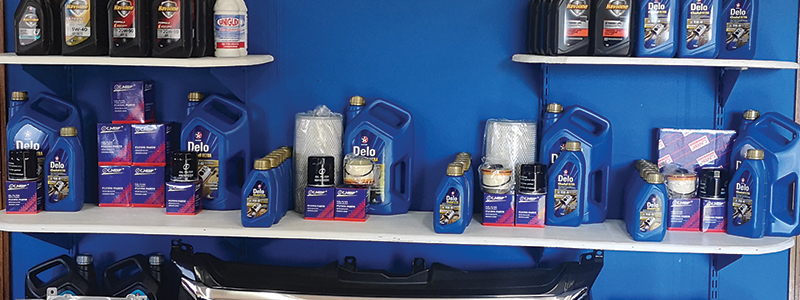
Greytown Depot
Lubes┃LPG┃Taxi Spares
Tel (+27) 33 413 2082
admin1@kznoilsgas.co.za
4 Dr. Elliot Street, Greytown
Learn about Oil
Oil is NOT Oil…
Lubes Distillation Process
Lube oil is extracted from crude oil, which undergoes a preliminary purification process (sedimentation) before it is pumped into fractionating towers. A typical high-efficiency fractionating tower, 25 to 35 feet (7.6 to 10.6 meters) in diameter and up to 400 feet (122 meters) tall, is constructed of high grade steels to resist the corrosive compounds present in crude oils; inside, it is fitted with an ascending series of condensate collecting trays.
Within a tower, the thousands of hydrocarbons in crude oil are separated from each other by a process called fractional distillation. As the vapors rise up through the tower, the various fractions cool, condense, and return to liquid form at different rates determined by their respective boiling points (the lower the boiling point of the fraction, the higher it rises before condensing).
Natural gas reaches its boiling point first, followed by gasoline, kerosene, fuel oil, lubricants, and tars.
Sedimentation
The crude oil is transported from the oil well to the refinery by pipeline or tanker ship. At the refinery, the oil undergoes sedimentation to remove any water and solid contaminants, such as sand and rock, that maybe suspended in it.
During this process, the crude is pumped into large holding tanks, where the water and oil are allowed to separate and the contaminants settle out of the oil.
Fractionating
Next, the crude oil is heated to about 700 degrees Fahrenheit (371 degrees Celsius). At this temperature it breaks down into a mixture of hot vapor and liquid that is then pumped into the bottom of the first of two fractionating towers. Here, the hot hydrocarbon vapors float upward.
As they cool, they condense and are collected in different trays installed at different levels in the tower. In this tower, normal atmospheric pressure is maintained continuously, and about 80 percent of the crude oil vaporizes.
3 The remaining 20 percent of the oil is then reheated and pumped into a second tower, wherein vacuum pressure lowers the residual oil’s boiling point so that it can be made to vaporize at a lower temperature. The heavier compounds with higher boiling points, such as tar and the inorganic compounds, remain behind for further processing.
Filtering and solvent extraction
After further processing to remove unwanted compounds, the lube oil that has been collected in the two fractionating towers is passed through several ultrafine filters, which remove remaining impurities. Aromatics, one such contaminant, contain six-carbon rings that would affect the lube oil’s viscosity if they weren’t removed in a process called solvent extraction.
Solvent extraction is possible because aromatics are more soluble in the solvent than the lube oil fraction is. When the lube oil is treated with the solvent, the aromatics dissolve; later, after the solvent has been removed, the aromatics can be recovered from it.
Lubricants Blending Plant
Finally, the oil is mixed with additives to give it the desired physical properties (such as the ability to withstand low temperatures). At this point, the lube oil is subjected to a variety of quality control tests that assess its viscosity, specific gravity, color, flash, and fire points.
Oil that meets quality standards is then packaged for sale and distribution.
Quality Control
Most applications of lube oils require that they be nonresinous, pale-colored, odorless, and oxidation-resistant. Over a dozen physical and chemical tests are used to classify and determine the grade of lubricating oils. Common physical tests include measurements for viscosity, specific gravity, and color, while typical chemical tests include those for flash and fire points.
Engine oil viscosity
Engine oil viscosity refers to how easily oil pours at a specified temperature. Thin oils have lower viscosity and pour more easily at low temperatures than thicker oils that have a higher viscosity. Thin oils reduce friction in engines and help engines start quickly during cold weather. Thick oils are better at maintaining film strength and oil pressure at high temperatures and loads.
Measuring engine oil viscosity
The Society of Automotive Engineers developed a scale for both engine (motor oil grades) and transmission oils.
Viscosity is notated using the common classification “XW-XX”. The number preceding the “W” (winter) rates the oil’s flow (viscosity) at zero degrees Fahrenheit (-17.8 degrees Celsius). The lower the number, the less the oil thickens in cold weather.
The numbers after the “XW” indicate viscosity at 100 degrees Celsius and represent the oil’s resistance to thinning at high temperatures.
For instance, oil with a 5W-30 grade thickens less than oil with a 10W-30 grade in cold weather. Oil with a 5W-30 grade thins out more quickly at high temperatures as compared to oils with a 5W-40 grade.
During winter and for cars used in cooler regions, your engine will benefit from using oil with low winter viscosity. During summer and in hotter regions, your engine will benefit more from oil with higher viscosity at 100 degrees Celsius.
When comparing oils, it is important to take into account the location in which the car will be used. Thin oils that are less prone to thickening in low temperatures will help you start your engine more quickly in winter while thick oils that are less prone to thinning in hot temperatures will help your engine perform better in summer. As a result, 0W-20 and 5W-30 oils have been developed for colder climates while 15W-40 and 20W-50 oils have been developed with hotter climates in mind.
Using the right lubricating oil
The brand of motor oil matters because that will depend on the quality of additives used as well as the right amount used to protect your engine. The viscosity grade (10W-30, for example) is also important.
Use only what the owner’s manual specifies. Using the wrong oil can lead to reduced lubrication and shorter engine life. If the manual says to use synthetic oil, do so.
Using the RIGHT lubricating oil
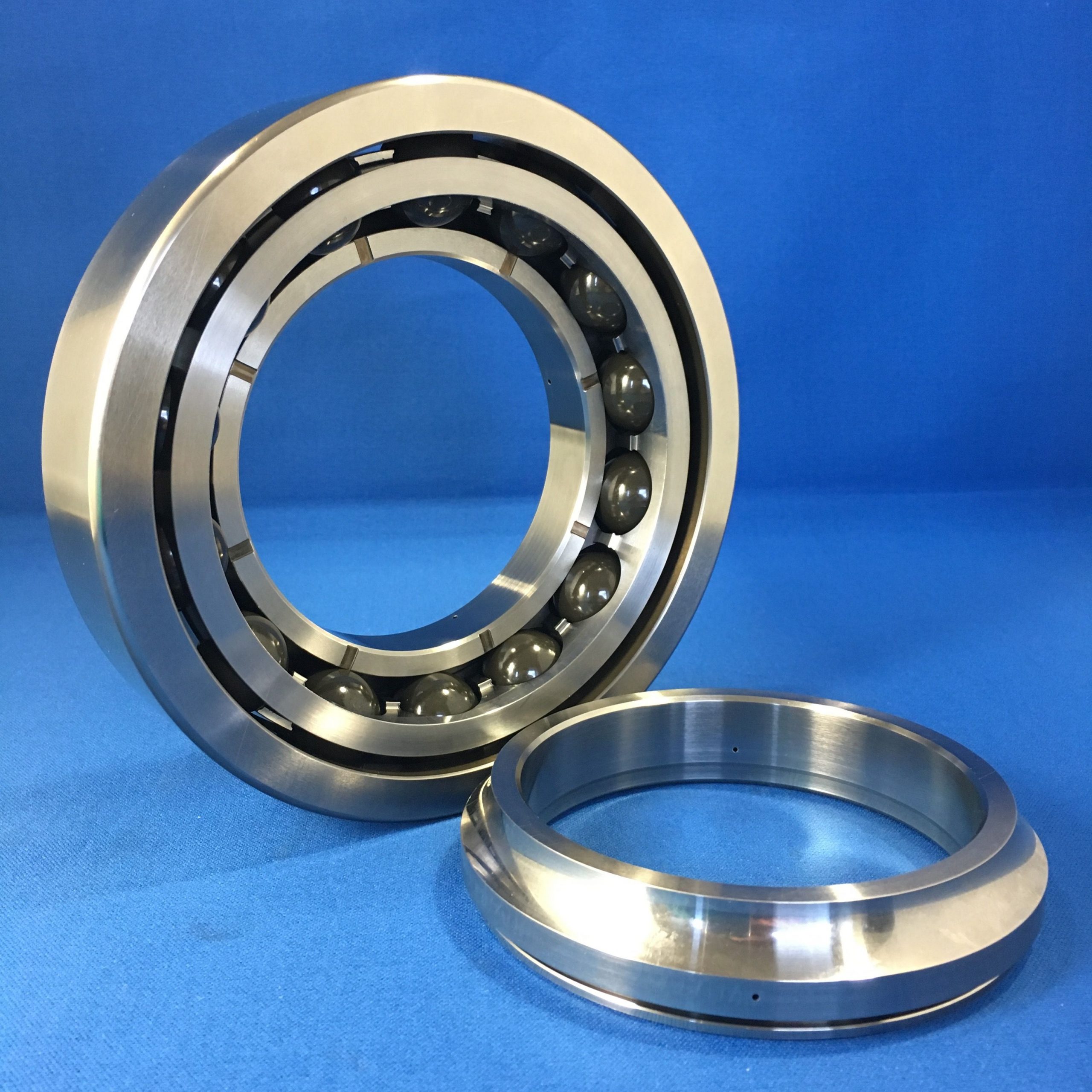
Using the WRONG lubricating oil
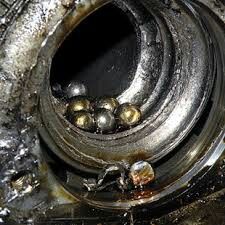
How can you be cheated?
Oil Additives
Use of additives is another approach to improving and maintaining oil performance. High engine temperatures combine with moisture, combustion byproducts (including unburned gasoline), rust, corrosion, engine-wear particles, and oxygen to produce sludge and varnish.
The additives not only assist oil in maintaining good lubrication, they also help minimize sludge and varnish, and any damage from their formation. Bad quality oils have far below the normal ratio of additives needed and will, over time, cause major damage to your engine.
Here are the categories of key additive ingredients and why they’re important:
• Viscosity-index improvers: Reduce the oil’s tendency to thin with increasing temperature.
• Detergents: Unlike the household type, they don’t scrub engine surfaces. They do remove some deposits, primarily solids. But their main purpose is to keep the surfaces clean by inhibiting the formation of high-temperature deposits, rust, and corrosion.
• Dispersants: Disperse solid particles, keeping them in solution, so they don’t come together to form sludge, varnish, and acids. Some additives work both as detergents and dispersants.
• Antiwear agents: There are times when the lubricating film breaks down, so the antiwear agents have to protect the metal surfaces. A zinc and phosphorus compound called ZDDP is a long-used favorite, along with other phosphorus (and sulphur) compounds. If you musts know, ZDDP stand for zinc dialkyl dithiophosphate.
• Friction modifiers: These aren’t the same as antiwear agents. They reduce engine friction and, so, can improve fuel economy. Graphite, molybdenum, and other compounds are used.
• Pour-point depressants: Just because the 0° F viscosity rating is low doesn’t mean the oil will flow readily at low temperatures. Oil contains wax particles that can congeal and reduce flow, so these additives are used to prevent it.
• Antioxidants: With engine temperatures being pushed up for better emissions control, the antioxidants are needed to prevent oxidation (and, therefore, thickening) of oil. Some of the additives that perform other functions also serve this purpose, such as the antiwear agents.
• Foam inhibitors: The crankshaft whipping through the oil in the pan causes foaming. Oil foam is not as effective a lubricant as a full-liquid stream, so the inhibitors are used to cause the foam bubbles to collapse.
• Rust/corrosion inhibitors: Protect metal parts from acids and moisture.
Sign up now to our newsletter. It’s FREE!
Keep up with our latest projects and product offerings.
